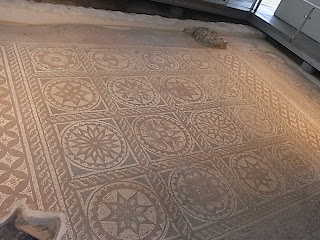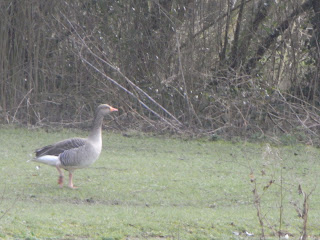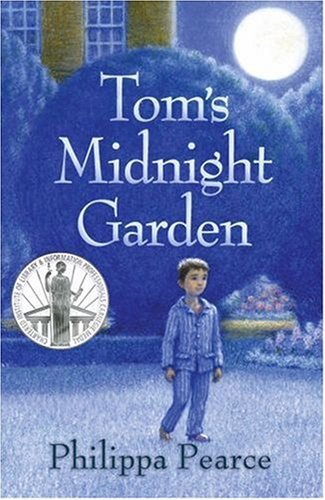Tom's Midnight Garden is an exciting novel written by Philippa Pearce in 1958.
It is set in the 1950s as well as the late Victorian era. The setting is Cambridge and the fen country in both. Pearce expresses how lovely the world was long ago, before cars and computers, through the book and the characters' words and feelings about it. For example, in the book there is a river. In the Victorian era it is nice and blue, it runs through and orchard and is inhabited by geese. In the 1950s, however, it no longer flows through beautiful meadows. It had back garden strips on one side and an asphalt path on the other. There was no fish. In the Victorian era you could swim and bathe in it but in the 1950s bathing is illegal in that part of the river.
The story is about a 14 year old, Tom, who has to leave his house as his brother Peter has measles and stay with his Aunt and Uncle in a poky little apartment in a big house that had been converted into flats. "The house was crowded round with newer, smaller houses that beat up to its very confines in a broken sea of bay windows and gable ends and pinnacles. It was the only big house among them, oblong, plain and grave," quotes Pearce in the book. The house has no garden. That night, however, he discovers that through the back door is a beautiful Victorian garden that only appears in the night time. In this garden and time period no-one can see or hear him except animals and two people, a little Victorian girl named Hatty and the old gardener Abel. In the garden Tom can walk through doors like a ghost and can jump from any height without hurting himself.
Time is of no importance in the garden; you can spend years there (if you don't fall asleep) and no time at all would pass in your time. Also, although Tom visits the garden every night, sometimes years have passed in Hatty's time since their last encounter. Sometimes Tom even arrives before his last encounter.
Tom and Hatty become good friends, but years pass in Hatty's time and soon she is a young woman and cannot see Tom. In Tom's time his parents receive a telegram saying Tom will be staying for one more sleep; his last time in the garden is near! However that night the garden isn't there! In horror, Tom screams out Hatty's name twice, until his aunt takes him back inside their flat. He wakes old Mrs Bartholomew, a widow who owns the house and its flats. She demands an apology from Tom. When Tom goes to her room to apologise (spoiler alert!) he discovers that old Mrs Bartholomew is no other than Hatty! They have a lovely talk and eventually Tom has to go. During the talk Tom discovers that the reason Tom was able to visit the garden was because Mrs Bartholemew was remembering her childhood and playing with Tom through her dreams every night. The last night when there wasn't any garden Mrs Bartholemew was remembering her marriage. That is also why the Victorian era is mainly reflected positively. It is being remembered happily by an elderly woman.
The main characters are 14 year old Tom Long, Hatty Melbourne (Bartholomew), Aunt Gwen and Uncle Alan, Abel the gardener and Peter Long.
Tom is adventurous and enjoys climbing trees. For some of the story he wished he could get sick with measles so he could spend more time with Hatty in the garden. Tom loves the garden and although he is able to walk through doors in it he is cautious about doing it and usually does it only as a last resort. The reason for this is he is scared he could get stuck halfway through a door.
Hatty is excited a lot and is good friends with Tom. Both of them don't always do what they are told. Hatty changes a lot through the book but inside she doesn't change much. At first when she is very young she tells Tom she is a princess but later in the book she tells him she is just a young orphan living with her aunt and cousins.
Uncle Alan is boring and practical. He loves talking about science and scientific theories. In the story he got furious with Tom when he said something about angels during a talk he was having with Tom about time.
Aunt Gwen loves children. She is Uncle Alan's wife and is an excellent cook. She is quite nice to Tom.
Abel is a simple gardener with a country accent. He looks after The Garden and is like a father to Hatty. He and Hatty are the only people that can see Tom in the Victorian Era. At first he thinks that Tom is a Demon from hell trying to kill Hatty but changes his mind when he sees Tom looking up a verse in the bible with her.
Peter is Tom's brother. He is sent letters from Tom and writes back in the book. One day when Tom forgot to write a letter to him he cries until he falls asleep and visits Tom and Hatty in his dream. In real life it is really happening. Tom shows Peter Hatty but Peter says it cannot be Hatty as Hatty is a little girl and this is a young woman. It is then Tom realises how much Hatty has grown up. When he wakes up he thinks it was all a nightmare.
Hatty changes from a tiny little girl to an old lady through the book, but the other main characters (except Abel, who is dead by the end) don't change much.
I like the book because of the use of time travel and because it is exciting and well written. The ending is good but it could happen a little later when Tom gets home. My favourite part is when Tom and Hatty skate to Ely Cathedral and go up into the tower. It is the last time Tom will ever visit the garden in the book.

















































